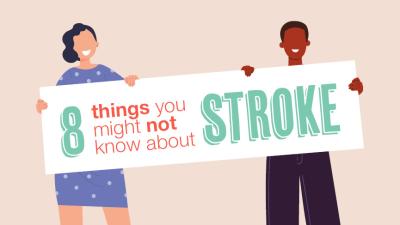Sit-stand desks have enjoyed a boom in popularity in recent years, but there are still many employers who either don't buy into the idea, or simply don't have the budget.
What we do know for certain is that staying in one posture all day is bad for us. Whether you have a sit-stand desk or not, research shows that you can greatly reduce your risk of ill health by moving more throughout the working day.

Keith Diaz, author of a study into sedentary behaviour at Columbia University Medical Centre, said: "If you sit at work all day, if you sit at home a lot, then you should be really mindful of trying to take a break from your sitting habits as often as possible – at least every 30 minutes."
The 2009 to 2013 study of nearly 8,000 people across the USA revealed that both the level of daily inactivity and the length of each bout of sedentary behaviour were linked with premature death.
People who sat frequently (12.5 hours a day or more) for longer periods (over 10 minutes at a time) were more than twice as likely to die prematurely.
"We were trying to understand what is the worst feature of a person’s sitting habits – is it how many hours a day you sit, or is it sitting in these long bouts," said Diaz. "Unfortunately the message is more mixed… it looks like both are bad for you."
As an ergonomics company, we do champion the use of sit-stand desks. We use them ourselves and of course we design and sell them to our clients too. However, we know that not everybody has or wants one, so it's important to think of other ways for employees to stay active at work.
Here are our top tips for staying active when you don't have a sit-stand desk:
Active working management training
Without understanding and support from managers, staff probably won't feel comfortable regularly leaving their desks to take moving breaks. This culture of presenteeism has to change. Managers can lead by example and encourage staff to get up and move every 30-60 minutes. Employees need to know that their physical activity is important not just for their personal health but for the business' long-term productivity. Find out more about active working ›
Space management
The layout of our environments can change the way we behave. With a few simple tweaks you can create an environment that encourages movement and collaboration. For example, where there are multiple kitchens, consider placing all the microwaves in one area so that people have to walk further and encounter members from other departments in order to cook lunch.
Organised fitness
Fitness instructors and yoga teachers can visit business premises during lunch, before, or after working hours to deliver exercise classes to employees. These can be offered as a free perk, or as a subsidised option.
Stretch/exercise spaces
Provide space away from the office chairs dedicated to stretching and exercising. When suffering from aches and pains - especially in the back, lying down on the floor and going through a few gentle stretches can help ease the discomfort significantly. Workstation exercises, simple exercises that you can do at your desk, should also be encouraged.
Group step challenges
Introducing an element of competition can help motivate staff to move more. Consider providing employees with step trackers, creating small teams and introducing regular step goals. Not only will this encourage more physical activity, it'll also help with team building and office morale.
Walking or standing meetings
Include taller work surfaces in meeting areas to facilitate standing meetings. Standing up for a short period of time activates the muscles and encourages better posture for improved circulation. Standing meetings also tend to be shorter - a great way to make the most of office time. Walking meetings are even better and are well suited to informal catch-ups or brainstorming sessions.
Face-to-face instead of email
Encourage staff to physically located the staff member they wish to talk to instead of sending an email or instant message (within reason). Not only does this rack up steps, it's also time-saving as any misunderstandings or further questions can be ironed out at the time.
Stand to take calls
It is certainly not advisable to use a computer standing up without a height-adjustable work surface, but there's no reason why you can't stand up to use the phone. Wireless headsets allow workers to get up and pace around when they're on the phone, without wasting any time.
Park further from work
Parking further from the office is a simple way to build up steps throughout the day. Even a small change in distance can add up over the weeks.
Cycle to work
While this is not an option for everybody, a lot of people overestimate the difficulty of cycling to and from work. Check out local cycle routes and provide staff with materials offering tips and maps. Signing up to the Cycle to Work Scheme provides staff with good discounts on bikes and safety accessories.
Walk at lunch
Encourage staff to get out into the fresh air on their lunch breaks. A significant number of UK office workers still eat lunch while they work - but is this really as productive as getting the blood and oxygen pumping with a brisk walk?
Although we prefer to encourage the use of sit-stand desks, we do realise this is not a suitable option for everybody which is why we also provide fixed height desks. These come in rectangle models in a choice of stylish finishes ideal for home, office, or meeting spaces.










